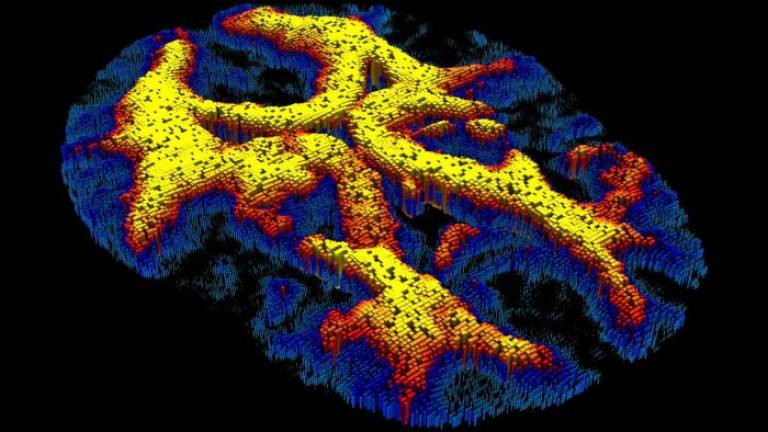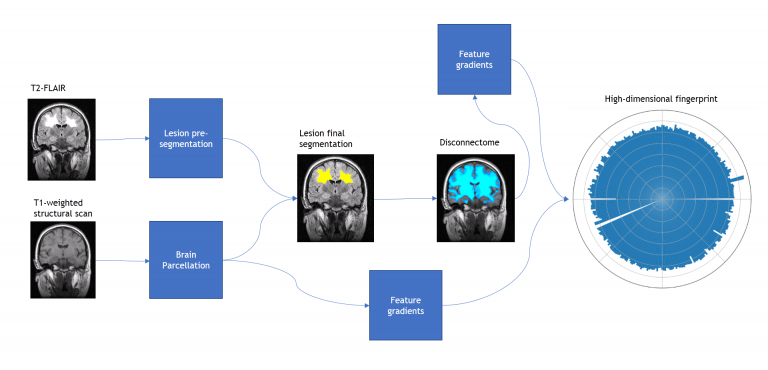New AI research could improve MS treatment
17 June 2019
Multiple sclerosis (MS) is a life-long condition that affects the brain and spinal cord. Around 100,000 Britons live with MS and 5,000 people are diagnosed with the condition each year.

Researchers from UCL and King's College have developed computer algorithms to track patients' responses to the MS treatment drug, natalizumab.
The team, led by Dr Parashkev Nachev (UCL Queen Square Institute of Neurology) trained the artificial intelligence system to recognise patterns in the patients' brain scans, allowing them to detect brain changes earlier and more accurately than the current standard. Currently, radiologists must individually count legions on a scan in order to measure brain damage.
This new AI technology has the potential to improve treatment for people living with MS.

A schematic showing how the researchers constructed 'fingerprints' of changes occurring within patients' brains, before and after treatment
“In practical terms, we can detect a patient’s response to treatment more accurately and change it appropriately, before they have deteriorated," said Parashkev.
“A response to treatment can show up on a brain scan long before the patient realises its effect,” he added. “It is important for us to develop sensitive methods to detect how these images subtly change over time, enabling us to anticipate new symptoms, rather than just react to them.”
Dr Baris Kanber of the UCL Centre for Medical Image Computing, who is the joint first-author of the study, said, “This has been a challenging investigation that required us to continuously innovate, as we had to work in the remit of real-world patient datasets rather than with data from controlled studies.
"In essence, we were able to construct fingerprints of change that occur within the brain before and after treatment, and show that the imaging response to treatment with natalizumab can be captured more sensitively than with conventional radiological measures using this type of high-dimensional analysis.”
This study was funded by the NIHR UCLH Biomedical Research Centre and the Wellcome Trust.
Related links:
- Dr Parashkev Nachev's research profile
- Dr Baris Kanber's research profile
- Financial Times article: "AI study in London offers hope for MS treatment"
 Close
Close

